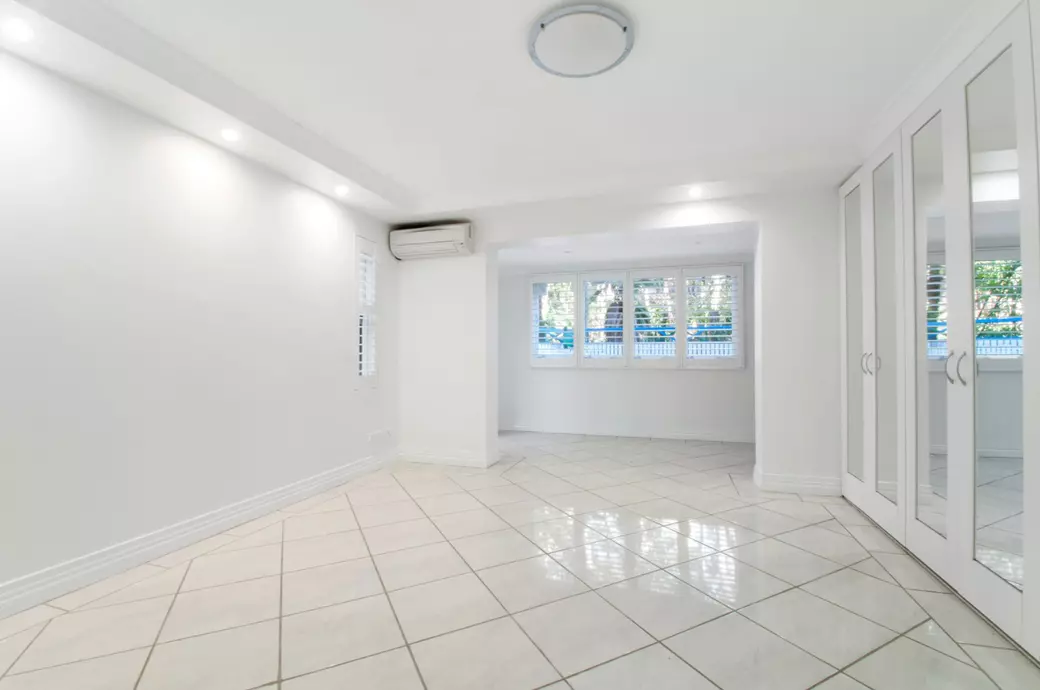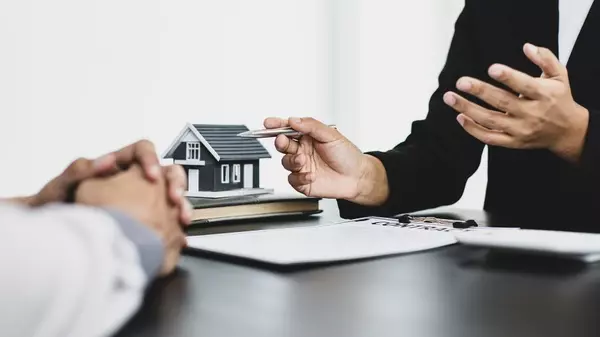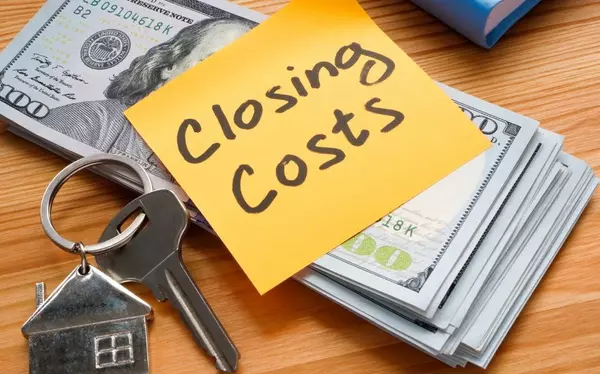Why Do Empty Homes Sell More Quickly Than Furnished Ones?

Why Do Empty Homes Sell More Quickly Than Furnished Ones?
Did you know that empty houses sell up to faster than furnished ones? When potential buyers walk into an empty home, they see a blank canvas, sparking their imagination to visualize the space as their own. This psychological connection can be a powerful motivator, making them more likely to make a quick offer.
Empty houses also present a cleaner, more streamlined appearance. Without furniture, the rooms appear larger and more inviting, allowing buyers to appreciate the true potential of the space. Additionally, an empty home is easier to maintain in show-ready condition, which can lead to more frequent and successful viewings.
Furthermore, sellers of empty houses might be perceived as more motivated, leading to competitive pricing and faster sales. The absence of personal items removes any distractions, enabling buyers to focus solely on the property’s features and layout.
Key takeaways:
- Psychological Appeal: Empty houses provide buyers with a blank canvas, sparking their imagination to visualize the space as their own. This psychological connection can lead to quicker decisions and offers.
- Cleaner and More Spacious Appearance: Without furniture, empty houses appear cleaner, more spacious, and inviting. Buyers can fully appreciate the true potential of the space, enhancing their interest in the property.
- Market Perception and Strategy: Empty houses are often perceived as better maintained and priced more competitively. Sellers may be perceived as more motivated, leading to faster sales and potentially higher final sale prices.
- Practical Advantages: Empty houses offer practical benefits such as move-in readiness, easier maintenance, and flexibility for staging. These factors contribute to more frequent and successful viewings, increasing the likelihood of a quick sale.
- Consideration of Downsides: While empty houses have clear advantages, it's essential to acknowledge potential downsides, such as the challenge of establishing an emotional connection with buyers. Sellers should carefully weigh the pros and cons based on their specific situation and property characteristics.
Psychological Impact on Buyers
Visualization plays a crucial role in the home-buying process. Empty spaces allow buyers to easily imagine their own furniture and decor in the house, fostering a personal connection. When buyers can see their own lifestyle fitting seamlessly into a property, it becomes easier for them to envision making it their home. This powerful visualization can be the deciding factor in their purchasing decision.
First impressions are equally important. An empty house often appears more spacious and inviting, making a strong initial impact. Without furniture and personal items, rooms look larger, airier, and more open. This sense of space can be appealing, as buyers often seek homes that feel expansive and uncluttered.
Additionally, an empty house serves as a neutral canvas. Without the influence of the current owner's style or belongings, buyers can focus on the architectural features and layout of the property. This neutrality helps them see the potential of the house and imagine how they could customize it to their tastes. It eliminates distractions and allows them to appreciate the property's possibilities fully.
Practical Considerations
Move-in readiness is a significant advantage of empty houses. Buyers who need to relocate quickly are often drawn to homes that are immediately available. An empty house signifies that the property is ready for a swift transaction, which can be a crucial factor for buyers with tight timelines or those relocating for work or personal reasons.
Maintenance and cleanliness are easier to manage in an empty home. Without furniture and personal items, the space stays tidier, and cleaning is straightforward. This ease of maintenance ensures that the house is always in show-ready condition, increasing the likelihood of frequent and successful showings. A clean, well-maintained property creates a positive impression, encouraging more serious offers from potential buyers.
Flexibility for staging is another practical benefit. Empty homes provide a blank canvas for professional stagers, allowing them to design the space to appeal to a broad range of buyers. Staging can highlight the property's best features and demonstrate its potential, helping buyers visualize how they could use the space. Customizing the staging to suit market trends and buyer preferences can significantly enhance the home's appeal and lead to quicker sales.
Market Perception and Strategy
Perceived value is a key factor influencing buyers. Empty houses often seem better maintained or less likely to have hidden issues, as there are no furnishings to distract from the home’s condition. Buyers can inspect every corner and assess the quality of the space without any obstructions. This transparency can increase trust and confidence, making buyers more inclined to proceed with a purchase.
Competitive pricing is another strategic advantage for empty homes. Sellers of these properties might be more motivated to close the deal quickly, leading them to set competitive prices. Attractive pricing can draw more interest and offers, creating a sense of competition among buyers. This increased activity can speed up the sales process and potentially lead to higher final sale prices.
The psychological effect of scarcity also plays a significant role. An empty house can signal that the seller is eager to finalize the transaction, which may create a sense of urgency among buyers. This urgency can push buyers to make faster decisions and submit offers quickly, fearing that the opportunity might slip away. The perception of a motivated seller and a limited time frame can drive quicker sales.
Potential Downsides and Counterpoints
While empty houses often sell faster, there are potential downsides and counterpoints to consider. One significant drawback is the potential lack of emotional connection. Some buyers find it challenging to connect emotionally with an empty house. Without furniture and personal touches, a home can feel cold and uninviting, making it harder for buyers to envision themselves living there. Emotional connection plays a crucial role in the buying decision, and for some, an empty house may fail to evoke the warm, homely feeling they desire.
Conversely, furnished homes can also sell quickly, especially when the furnishings are high-quality or stylishly arranged. A well-furnished home can create an immediate emotional impact, allowing buyers to see the potential lifestyle they could lead. For example, luxury homes with professionally designed interiors can attract buyers who are drawn to the aesthetics and convenience of moving into a beautifully styled space. In such cases, the furniture and decor act as selling points, showcasing the home's best features and helping buyers imagine their life there.
Additionally, furnished homes in good condition can highlight the functionality of the space. Staging specific areas, like a cozy reading nook or a functional home office, can help buyers understand how they might use different parts of the house. This practical demonstration can be particularly appealing to those who might struggle with spatial visualization.
Ultimately, while empty houses have clear advantages in terms of maintenance, staging flexibility, and perceived value, it is important to recognize that furnished homes can also sell quickly under the right circumstances. High-quality furnishings and thoughtful staging can create an inviting atmosphere that resonates with buyers on an emotional level, potentially leading to faster sales. In the end, the choice between selling an empty or furnished home should be based on the specific property, target market, and seller’s goals.
Tips for Sellers
Selling an empty house comes with its own set of challenges and opportunities. Here are some valuable tips for sellers to ensure a successful sale:
1. Preparing an Empty House for Sale
- Make sure you do a complete check of the property to determine what needs to be maintained or repaired.
- To make the space feel tidy and welcoming, think about painting the walls in neutral hues.
- Pay attention to curb appeal by ensuring the exterior of the house is well-maintained, including the lawn, landscaping, and entryway.
2. When to Leave Furniture
- Evaluate whether leaving some furniture behind could enhance the appeal of the home. In larger rooms, strategically placed furniture can help buyers visualize the space more effectively.
- Focus on key areas such as the living room, dining room, and primary bedroom, where furniture can showcase the functionality and potential of the space.
- Consult with a real estate agent or professional stager to determine the best approach for staging specific rooms or areas.
3. Working with Professionals
- Enlist the expertise of a real estate agent who has experience selling empty homes. They can provide valuable insights into market trends, pricing strategies, and effective marketing techniques.
- Consider hiring a professional stager to maximize the home's appeal and create an inviting atmosphere for potential buyers. A skilled stager can highlight the property's best features and help buyers envision themselves living in the space.
- Collaborate closely with your real estate agent and stager to develop a comprehensive marketing plan that showcases the property in its best light. This may include professional photography, virtual tours, and targeted advertising campaigns.
By following these tips and leveraging the expertise of real estate professionals, sellers can increase the likelihood of selling their empty house quickly and at the best possible price.
Conclusion:
In conclusion, the question of why empty houses tend to sell faster than furnished ones encompasses various factors, including psychological, practical, and market-driven elements. Empty houses offer potential buyers a blank canvas upon which they can project their visions of home, fostering a strong emotional connection and driving quicker decisions. Additionally, the practical advantages of move-in readiness, easier maintenance, and staging flexibility make empty houses more appealing to buyers with tight timelines or specific preferences.
Market perception further boosts the appeal of empty houses, with buyers often perceiving them as better maintained and priced more competitively. The sense of scarcity associated with empty houses can also create a sense of urgency among buyers, further accelerating the sales process.
However, it's essential to acknowledge that there are potential downsides to selling an empty house, such as the challenge of establishing an emotional connection with buyers. Furnished homes, particularly those with high-quality furnishings and stylish decor, can also sell quickly under the right circumstances.
Ultimately, sellers should carefully weigh the pros and cons of selling an empty versus furnished home based on their specific situation, property characteristics, and target market. By following practical tips for preparing an empty house for sale and collaborating with real estate professionals, sellers can maximize their chances of a successful and expedited sale, regardless of the property's furnishings.
Categories
Recent Posts










